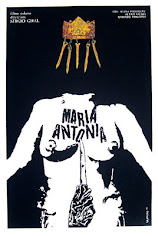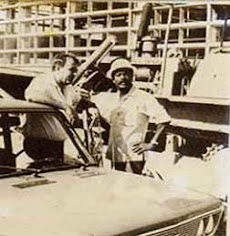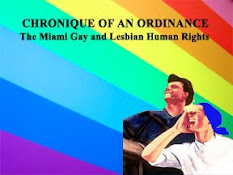THE INVISIBLE COLOR
By Sergio Giral
Over decade Latino immigration have caused a major shift in the demographic complexion of Unites State. Caribbean, Central and South Americans are expanding and contributing to the social and cultural composition in the country. Among these growing group of Latinos who have played a significant role in this complexion are – the Black Latinos – who has gone largely unnoticed, not only to White and Black Americans, but also to Latino Americans whose own social structure historically has alienated them as a result of race. If we focus on the Black Latino experience, we will find that many immigrants and exiles had settled where topographical, cultural and language similarities afforded them the easiest opportunity for assimilation into U.S. society. Assimilation, however, proved more to difficult to attain for Black and mestizo, especially in a traditional racial social structure. However, by 1965, the United States’ history of slavery, segregation and racism was overcome by the achievements of its Civil Rights Movement. Focusing on Cuba’s experience, the first Cuban leap to Miami after Fidel Castro’s victory in late 1958 was wealthy and well-educated white elite who spoke English and slipped easily into Miami society. However, by 1965, the United States’ history of slavery, segregation and racism was superseded to by the achievements of its Civil Rights Movement. As a result, the potential for racial equality in the United States soon became a contributing factor in many Black Cubans’ decision to immigrate to the United States in the Mariel’s migration and the 1995 boatlift explosion preferable to cities like New York, where other Black Latinos groups had established a large and important presence. Popular culture may provide some insight, especially if we examine television – the epitome of an American popular culture. It is elementary to acknowledge that television’s publicity spots and commercials are targeted to attract consumers. And soap operas pursue ratings to accomplish sponsors investment, yet Latino TV producers avoid the Black subject, mimicking Hollywood on the 50’s when film studios cast Gina Lollobrigida, an Italian actress to play Queen of Sheba on “Salomon and Sheba” or in “Veracruz” where Sara Montiel, an Spaniard actress, plays the role of an American Indian girl, the possible closer look alike to an average American spectator.
Gina Lollobrigida in Solomon and Sheba Sara Montiel in Veracruz
This schematic tradition survive on the Latino media and suppresses the possibility of a love story where both characters are Black, a sitcom like “Meet the Browns” or a talk show led by a Latino Black anchor such as Oprah in the American TV network, or a Tyler Perry’s film “For Colored Girls”, just to cite some examples. Even Colombia and Brazil who have a large Black population and are great soap opera providers, Black characters are reserved for maids, chauffeurs and slaves or exceptionally with Tais Araujo in “Xica da Silva” a 1966 Brazilian soap opera where a Black actress played the leading role. Or taking the case of Cuba, with a Socialist regimen that presumes of abolishing racial discrimination where soap operas suffers a lack of Black actors in a country with a 60% of Black population approximately. But once again the absence of a Black identity (excluding sports and entertainment), appears to prove that Black Latinos are a non-existent consumer demographic group, and leads one to think that the group is viewed as largely insignificant or obviously invisible from days of slavery to their significance in contemporary American society.
On my films I always have turn the camera point of view to the background, where slaves, maids and working class Black characters traditionally move along. From “The Other Francisco” that tells the impossible love story between two Black slaves; “Slaves Hunter”, “Maluala” and “Placido” that count the ordeal of Blacks and mestizos in search for freedom and equality in Cuba 19th. Century; “Maria Antonia” portraying the tragedy of a “mulata:” in Cuban Republican times; “Glass Roof” that denounces the privileges of white workers in a Socialist Cuba with a 60% of Black and mulatto population; to a more recent film “Two Times Ana” depicting the dreams and reality of a “colored” market cashier in Miami, my films have intended to contribute to unveil this invisible color on the screens.
Elvira Valdés in Two Times Ana 2011
Today seems hard to accomplish and to fill a void in the recording and reporting of the Black Latino experience as represented in both U.S. Census data and American popular culture as even Census data fails to accurately report upon the percentage of the count that was actually multiracial or specifically, Black Latinos. Without specific data on Latinos of African descendants, it seems that the only way to assess the role, which this invisible group plays in our society today, is let our own daily experience be the judge. The future of the Latino-American community depends on confronting the racial schisms that have been subordinated and denied for generations.
Lecture giving March 29th, 2011 at Markette University, Milwaukee, WI.




















No comments:
Post a Comment